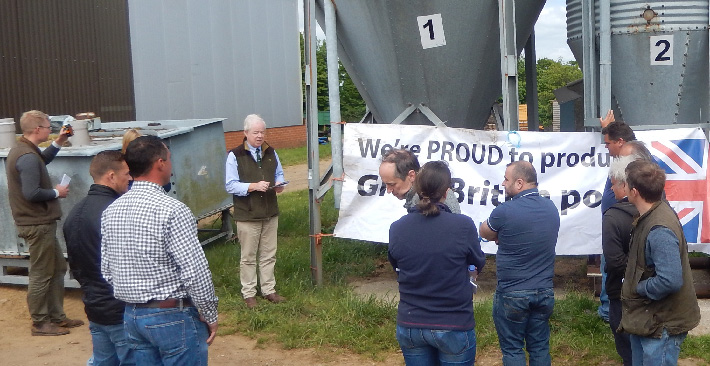With many of the larger abattoirs in the UK and beyond “done and dusted” as far as Christmas and New Year stocks are concerned, a quiet trading day was anticipated, with the SPP up 1.15p to 161.84p, which is 21p higher than its value at the start of the year.
However, the influential German producer price took a sharp downward step slipping by a significant eight cents to €1.95, which is equivalent to 167p/kg in our money, and it was very much a case of “no room at the inn”.
It will be interesting to see how prices react after Christmas, with pig pundits suggesting that there is room for improvement and prices should continue to recover after the holiday period.
Weekly contribution prices are expected to stand on in the main which comes as no surprise, with most between 155- 163p.
Spot demand remains at similar levels on the week in and around 163-165p but fresh meat demand still remains selective and it would be reassuring to see better domestic sales rather than having to rely on the Chinese African swine fever epidemic to encourage a further recovery in pig prices at a time of year which in the past, has often been a very difficult trading period but with few signs of pigs being rolled let’s hope it stays that way.
As expected, UK cull sow values have slipped in line with European trends, with prices for next week back by around 4p/kg and most culls traded in the 112-116p range, although the value of the euro has recovered to some extent now that the Brexit euphoria is starting to wear off and the implications of all the work that has to be done during the 12 month transition period is starting to be appreciated with a weaker pound lifting the euro to 85.6p at mid-day on Friday, compared with 83.5p the previous week.
Weaner prices are continuing to reflect improvements in the SPP, with the latest AHDB 7kg average quoted at £41.80/head and 30kg weaners are reported to be trading at around £15 per head above this level and although weaner prices in parts of Europe are reportedly at record levels, the last thing our industry needs is for live exports of weaners going to Europe, bearing in mind the huge risks that could be posed by livestock trucks returning or passing through AFS regions in Europe on their way back to the UK.
Feed wheat prices are starting to creep ahead with January ’20 futures quoted at £153/t and September ’20 at £161/t.
Barley continues to trade at around £22/t below wheat, with January ’20 deals being done at £131/t and September ’20 at £137/t. Soya prices have also nudged ahead with Hipro soya meal for the January-April period at £297/t and for May- October at £293/t.
With the ongoing wet weather in many parts of the UK and Northern Europe, now would be a good time for farmers or pig producers to keep their eye on cereal values.
Not only could there be more expensive pig feed to contend with but straw may also become scarce if these weather trends continue, although that will hardly worry most of our (former) EU partners, most of whom think straw is something to make sun hats out of rather than give it to pigs.
And finally, next week’s commentary will include a brief look back and look ahead at the industry. No doubt it will be dominated by the ongoing ASF situation in China and 20 other neighbouring countries with producers needing to be aware of the ability of the Chinese to rebuild their pig herds and build new units, but there is still a long way to go to achieve this.
Now is the time for UK producers who have any spare funds to look at upgrading and improving productivity levels, rather than waiting for us to be on the receiving end price falls which may be in the pipeline over the next few years on the basis of, in the pig industry, what normally goes up often comes down.




